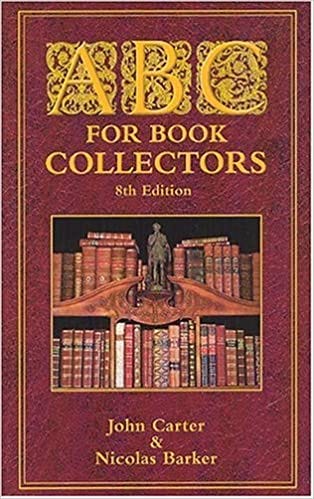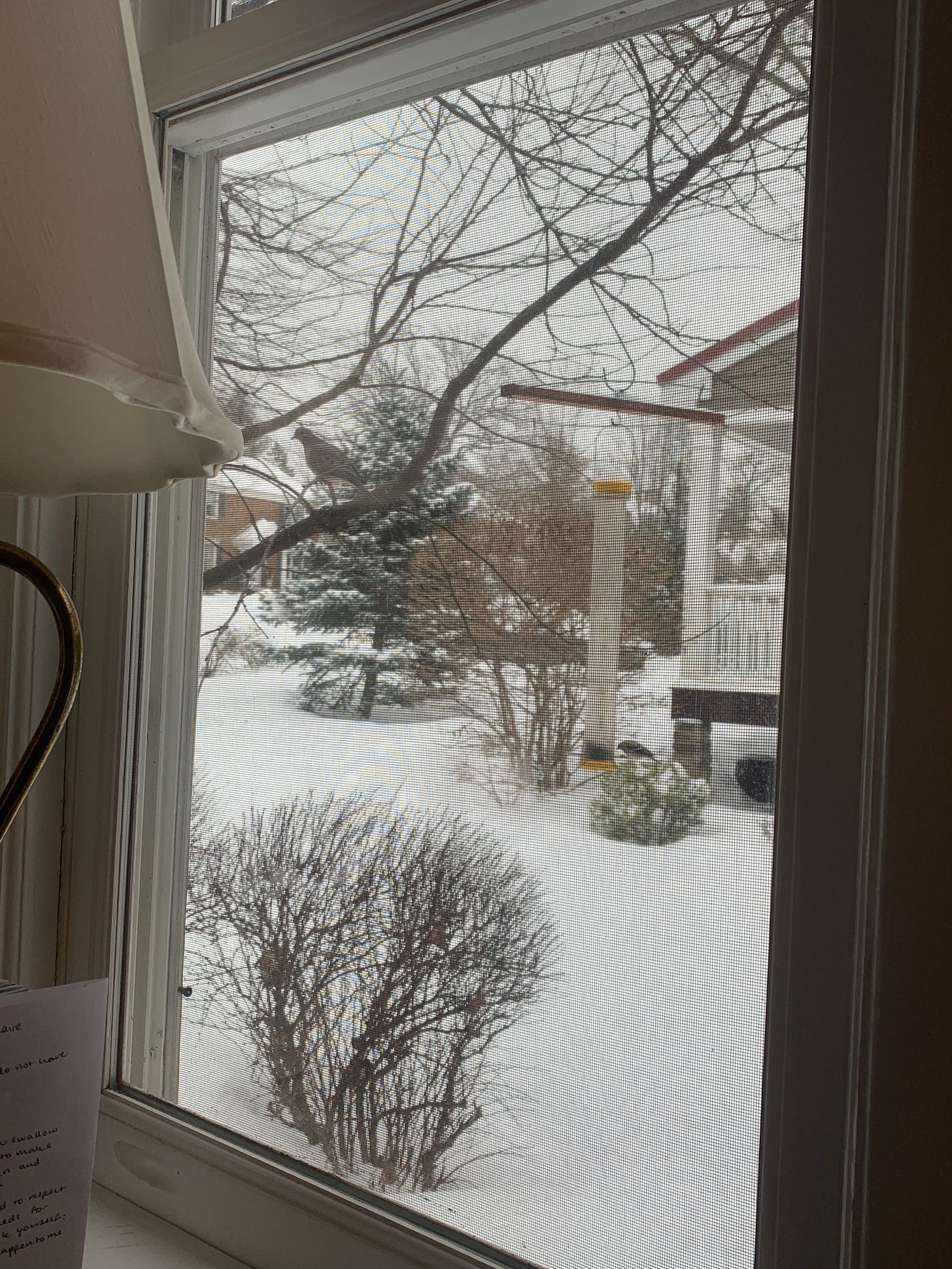Week 3: Do you have a soldering iron I could borrow?
reference questions, redesigning libraries, and writing better descriptions
The first week of this newsletter I wrote about how to ask questions, and last week I wrote about how to find things. These are the two pillars of reference librarianship. But reference librarianship is changing: people are asking new kinds of questions, finding aids are transforming, even the designation of “reference librarian” is melding with other responsibilities.
This week in “Reference Sources for Rare Books,” my professor lectured on 40 different volumes or sets of “general reference sources”—basically, a /brief/ review of //some// of the general compendiums a librarian can turn to in order to figure out where she needs to go next to answer a question. We began simply, with The Encyclopaedia Britannica, 11th edition (29 volumes, printed 1911), which was the last full edition with all the major articles written by field experts instead of professional writers. But we also discussed biographical dictionaries, which are compilations of (usually dead) people, usually listed in alphabetical order. The Dictionary of National Biography (22 volumes, printed beginning 1908), for example, is the major biographical source for anyone famous from the British Isles and the British Empire, useful for information on a publisher’s or author’s life, or perhaps the provenance (ownership), of materials. DNB prioritizes landed gentry and noblepeople, however, so you’re not going to find everyone in there. Remember: all information organization is biased.
(I want to note that my professor lectured for nearly three hours (we got a 25-minute break, do not fear), seemingly without notes, on the content and strengths and weaknesses of each of these volumes, their reference shorthand (i.e. how librarians and booksellers will cite these works in catalogue description notes) along with biographical and historical information about their compilers. All of that information on recall! It was astonishing. People literally fly from around the world to take a version of this class each year at the Rare Book School at UVA. This is serious knowledge.)
We also covered annals and chronologies, glossaries, and periodical indexes (did you know those were a thing? I didn’t). Another example that we reviewed, which I’m noting here just because I love it so much, is John Carter’s ABC for Book Collectors, which is the basic dictionary for anybody working with rare books. When I first began working in the special collections library at my university and had questions about how to describe the materials in front of me, my supervisor pointed me to Carter’s ABC. There was a copy on the mantel in the Modern Room of the bookshop I worked at last autumn. I keep the digital copy bookmarked on my computer. It is so useful, and so, so, opinionated. Carter has thoughts, and they are often circuitous but ultimately endearing or outright entertaining.
Corollary: another ongoing rare book dictionary can be found on Twitter with the hashtag #rarebookwords, initiated and run by Rebecca Romney of Type Punch Matrix. Very useful and accessible definitions of rare book terms.
Okay, fine, how does this list of books about books about books relate to how reference is changing? This all sounds very traditional, no? One example my professor listed was Guide to Reference Books, 11th edition (1996), edited by Robert Balay and published by the American Library Association. The 11th edition was the last printed edition and it was primarily intended for librarians and members of the ALA. Old-school Masters of Library Science (MLS) programs included a Reference course that basically taught this book, which often inhabits library reference desks. It provides evaluative information on major works in all European languages, arranged by subject in accordance with (a) classification system (no small feat). The American Library Association published this book (which you can buy for $294!) because, for many years, they saw reference practice and maintaining reference sources as one of its major responsibilities.
But they last published an edition 25 years ago, and the updated online version, edited by Bob Kieft, has since been removed. ALA has somewhat abandoned the responsibility of keeping up with reference material, which is a good indication of how ALA views the changing responsibilities of librarians.
As information has become more widely accessible and cheaper to acquire (books are expensive, but not as expensive as they once were!), and as people have a more active role in knowledge production, rather than just knowledge consumption, librarians are moving away from being information brokers. They are now information guides. People’s questions are getting harder, and while they still phone up reference desks to learn the opening hours of local auto shop, they decreasingly ask “what and who and where” questions and increasingly ask “how” and “why” questions.
I love it when things align: in User Services and Tools last night, we discussed these same changes to the types of questions patrons ask. Instead of, “Where can I find a map of Flatbush, Brooklyn?” librarians are asked, “How can I create something that shows the changes to Flatbush over time?” Instead of “Can you help me find a book about electronics repair?” librarians are asked “Do you have a soldering iron I can borrow?” (and they can!)
The changing nature of the questions librarians receive plays out in the strategic and physical design of library spaces. Last week, my professor gave a fantastic lecture on design thinking, which I had never heard of because, to my own detriment, I avoided any business-organization classes in college with a mix of fear and gusto (I think I was the only one in my friend group who graduated without taking Engineering 90, the intro-to-organizations class. The word “engineering” scared me). Design thinking approaches problems (like how to get teenagers to feel comfortable at the library) by asking the same kinds of questions that users increasingly ask of librarians, framed as “how might we?” Design thinking licenses librarians to brainstorm is big, bold, brash ways, even if the results end up being rather simple.
This week, my professor gave another fantastic lecture (she color-codes her powerpoints, she has my heart) on the results of design thinking: in this case, various kinds of creative spaces that librarians are adopting to meet people’s learning and doing needs. There are tool libraries, where you can borrow power and woodworking and gardening tools; gallery spaces with rotating installations from various community groups; teaching kitchens, which host nutritionists and chefs; digital media labs, with equipment and software for video production; makerspaces, with craft and production tools of so many kinds, I couldn’t list them all. Libraries are learning spaces in the full understanding of the word, and they are increasingly adjusting and adding spaces attuned to the different styles and needs of learners.
This is a really important point regarding reference: reference exists to serve the needs of communities of users, not because librarians exist. So, if the ALA is no longer printing the Guide to Reference, it’s probably because they’re reprioritizing all the trends and tools librarians must consider to make their spaces and resources that much more useful for people.
This shift from the “what and who and where” to the “how and why” also guides the cataloguing and scouting I do for the current bookshop I work at. Forgive me, I am about to generalize: old-school bookselling and collecting is often interested in the “what and who and where”: What is the book? Who wrote it? Where does it come from? These questions are a hallmark of “high spot” or “crown jewel” book collecting, or buying the really famous, really expensive stuff. Like first editions in fine (meaning perfect) condition, with signatures or, even better, significant inscriptions to the author or artists’ collaborators or colleagues or famous friends. Some people are really interested in this kind of collecting, but it’s not very sustainable and it’s definitely not affordable: there are only so many copies of the first edition of Alice in Wonderland (twenty-two, because Carroll was unhappy with the original illustrations, stopped the print run, and had all of the copies burned or destroyed. We know where all of those copies are, and the last one on the market was expected to sell for 2-3 million pounds).
You can certainly ask the “how and why” questions of high-point books (the story of Alice’s failed first imprint is an excellent example of how and why surviving copies are so expensive), but these questions are especially useful for lesser-known materials, the value or intrigue of which is not readily apparent. Two weeks ago, I shared the story of Alice Walker and Howard Zinn’s friendship, immortalized in a familiar inscription from Walker that raises the value of an already scarce edition of her book In Love & Trouble (how did they know each other? how did their friendship impact her writing?). The how and why draws connections from the high spots to adjacent, lesser-known works: a collection of French writing blotters that tell us about interwar commercial and typographic styles; an early biography of Louisa May Alcott that contains one of the few physical descriptions of Alcott; a paperback predecessor to Penguin. I didn’t know where these Buvards were from, or who Lurabel Harlow was, or what Charles Boni did, but now I know how and why they are unusual, notable, or altogether spectacular.
Housekeeping & Birdseeking
house
I will most likely send this newsletter out on Thursdays: I have class till 8pm on Wednesdays and trying to send this out on the same day that I spend 7 hours staring at Zoom makes my head spin. Also, last night, the co-creators of Avatar: The Last Airbender announced the launch of Avatar Studios, and in my hysterics, I lost any hope of completing this to send to you all.
Last week’s newsletter didn’t expressly answer my father’s perennial question “So do you learn the Dewey Decimal System in library school?” The short answer is no, we don’t. Librarians quickly learn the specifics of whichever classification system they use on a daily basis, which might be the DDC and might not. But there is no library course dedicated to memorizing all of the DDC subject headings.
What I read this past week:
The Weight of Ink by Rachel Kaddish. Utterly stupendous historical fiction novel. Highly recommend.
Detransition, Baby by Torrey Peters. February’s pick for Roxane Gay’s “Audacious Book Club.” It’s spiky and pithy and asks really hard questions about womanhood, motherhood, and loving people as their whole selves.
What I am currently reading: Shuggie Bain by Douglas Stewart. Recipient of the 2020 Booker Prize! I’m only 15 pages in but I am already sad, so I know it’ll be good.
Please share this newsletter with your friends and miscellaneous relatives.
bird
This past week I woke up to birdsong every morning, which is a bit dissociative because we are still firmly in winter and birdsong calls upon Spring.
All five birdfeeders are low. The feeder next to my office window is equidistant from the two doors to our house and there are two feet of snow to trek through, so it remains unfilled. The finches have been milking the last inch of birdseed for all its worth, and I feel particularly bad when they snuggle under the roof during the relentless snow we’ve been getting.
Here’s a photo of a pregnant morning dove on a branch and a finch pecking out the remaining birdseed for all its worth.
More later.





